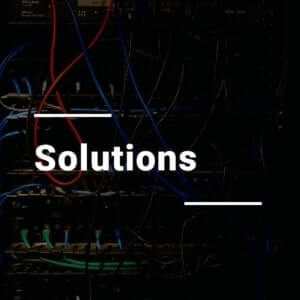Google has announced a groundbreaking advancement in quantum computing, suggesting its new supercomputer might have implications for the concept of parallel universes. The development has sparked both excitement and criticism within the scientific community.
The company’s latest quantum chip, named Willow, has reportedly solved an extraordinarily complex computational problem. Traditional supercomputers, according to estimates, would require approximately 10 septillion years to complete the same task—a period far exceeding the age of the known universe. Google claims that Willow achieved the solution in under five minutes, marking a significant leap in computational capabilities.
The project, led by physicist Hartmut Neven of the Google Quantum AI team, has drawn attention to the possible connection between quantum computing and the multiverse theory. Neven pointed to theoretical work by Oxford University physicist David Deutsch, who proposed that successful quantum computation could support the “many worlds interpretation” of quantum mechanics. This interpretation implies the presence of numerous parallel universes, where each universe corresponds to a different outcome of events.
David Deutsch, who began exploring quantum computing in the 1970s, initially pursued the field as a means to test the multiverse hypothesis rather than focusing on the technology itself.
However, the claim linking Google’s results to the multiverse theory has not gone unchallenged. Astrophysicist and science writer Ethan Siegel criticized the assertion, describing it as a conflation of unrelated ideas. Siegel argued that the concept of quantum mechanical Hilbert space—a mathematical framework for quantum systems—is not synonymous with the existence of parallel universes or a multiverse. According to Siegel, while interpretations of quantum mechanics may include such concepts, successful quantum computation does not inherently validate their reality.
Siegel elaborated that existing multiverse models differ significantly. One version posits that parallel universes exist in distant regions of space, potentially originating from separate Big Bang events. Another suggests that every decision or action in the universe creates a split in space-time, leading to infinite timelines where each possible outcome occurs. He emphasized that quantum mechanics operates mathematically and physically without requiring parallel universes as a foundation.
Despite the skepticism, Siegel acknowledged the technological achievement of Google’s results, describing it as a major milestone for quantum computation. He recognized the potential for quantum technology to address significant challenges, such as advancing medicine, improving battery design for electric vehicles, and accelerating fusion energy research.
Google underscored the transformative potential of Willow’s performance. In a blog post, Neven stated that many critical applications, currently infeasible for classical computers, could become achievable with quantum computing. These include breakthroughs in fields requiring vast computational power, such as drug discovery, energy optimization, and environmental solutions.
Willow operates with 105 qubits, the fundamental unit of quantum information. This marks a substantial improvement over Google’s earlier Sycamore chip, unveiled in 2019, which started with 53 qubits and later reached 70 qubits. The increase in qubit count enhances computational power exponentially, a core advantage of quantum systems over classical computers.
Quantum computing leverages the principles of quantum physics, where data fragments, or qubits, can exist as both 1 and 0 simultaneously. This duality allows quantum computers to process vast amounts of information and explore numerous outcomes in parallel, far beyond the capabilities of traditional binary systems. Additionally, the phenomenon of quantum entanglement—where particles remain interconnected regardless of distance—further amplifies a quantum computer’s processing power by enabling instant communication between qubits.
Experts in the field have acknowledged the importance of Google’s achievement. Winfried Hensinger, director of the Sussex Centre for Quantum Technologies, described Willow’s success as a critical milestone in the development of practical quantum computers. He expressed confidence that such advancements would ultimately unlock applications with profound impacts on humanity.
Google’s breakthrough with Willow represents a pivotal step in quantum computing, positioning the technology as a potential solution to some of the world’s most complex problems. While debates around its implications for the multiverse continue, the progress achieved highlights the immense possibilities of quantum technology for science and innovation.













